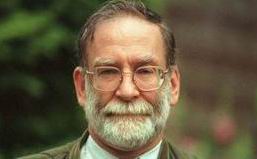|
The Shipman Inquiry was
the report produced by a British governmental investigation into
the activities of general practitioner and serial killer Harold
Shipman. Shipman was caught in 1998 and the inquiry commenced
after his trial in 2000. It released its findings in various
stages, with its sixth and final report being released on 27
January 2005. It was chaired by Dame Janet Smith DBE.
While Shipman was convicted of 15 murders, the
inquiry established that he probably committed 250 in total,
though the true number could be more. The Inquiry took
approximately 2,500 witness statements and analysed approximately
270,000 pages of evidence. In total the six reports ran to 5,000
pages and the investigation cost £21 million.
Remit and make up of inquiry
On 1 February 2000, the Secretary of State for
Health, Alan Milburn, announced that an independent private
inquiry would take place into Shipman's activities. It would
decide what "changes to current systems should be made in order to
safeguard patients in the future". Its findings would be made
public, though it would be held in private. It was to be chaired
by Lord Laming of Tewin.
It began work on 10 March and was to produce a
report by September 2000. Many families of the victims along with
certain sections of the British media called for a Judicial Review
in the High Court. It found in their favour and recommended that
the Inquiry be held in public. The Secretary of State for Health
agreed and in September 2000, announced that the Inquiry would be
held under the terms of the Tribunals of Inquiry (Evidence) Act
1921. This was then ratified by both Houses of Parliament in
January 2001. Lord Laming was replaced by Dame Janet. Dame Janet
initially hoped to finish her inquiries by "Spring of 2003". The
Inquiry was held in the Town Hall in Manchester with proceedings
relayed by closed circuit television to the public library in
Hyde, where Shipman had lived, in order for the town's inhabitants
to follow it more easily.
There were four main areas investigated:
-
The extent of Shipman's unlawful activities
-
The actions of the statutory bodies and other
organisations concerned in the procedures and investigations
which followed the deaths of Shipman's patients
-
The performance of the statutory bodies and
other organisations with responsibility for monitoring primary
care provision and the use of controlled drugs
-
What steps should be taken to protect
patients in the future
Findings
The Inquiry found "major flaws in the systems
that govern death registration, the prescription of drugs and the
monitoring of doctors." In all, including the 15 deaths Shipman
was convicted of, it concluded that Shipman had killed 250
patients, starting in 1971 while he was working in Pontefract
General Infirmary. Though the majority of his victims were
elderly, there was a "quite serious suspicion" that he had killed
one patient aged four.
The report rejected claims by a prisoner, John
Harkin, who knew Shipman while he was in Preston prison, that
Shipman had confessed to 508 deaths. In Dame Janet's view, no
"reliance [could] be placed on Mr Harkin's account."
Recommendations
The Inquiry made a number of recommendations
for the reform of various British systems. It called for coroners
to be better trained and underlined that better controls on the
use of schedule 2, 3 and 4 drugs by doctors and pharmacists were
needed.
It also recommended that fundamental changes be
implemented in the way that doctors are overseen. Specifically, it
said, the General Medical Council "was an organisation designed to
look after the interests of doctors, not patients".
Post-inquiry situation
In 2008, a University of Dundee investigation
found that even if the monitoring of patients' deaths was
introduced as the Inquiry suggested, it would provide "such poor
evidence that it would take 30 deaths to detect a murderous trend"
because since 2004 in Britain, "patients have been registered with
practices, not individual doctors, so the data on each GP is
lacking".
Wikipedia.org
|

